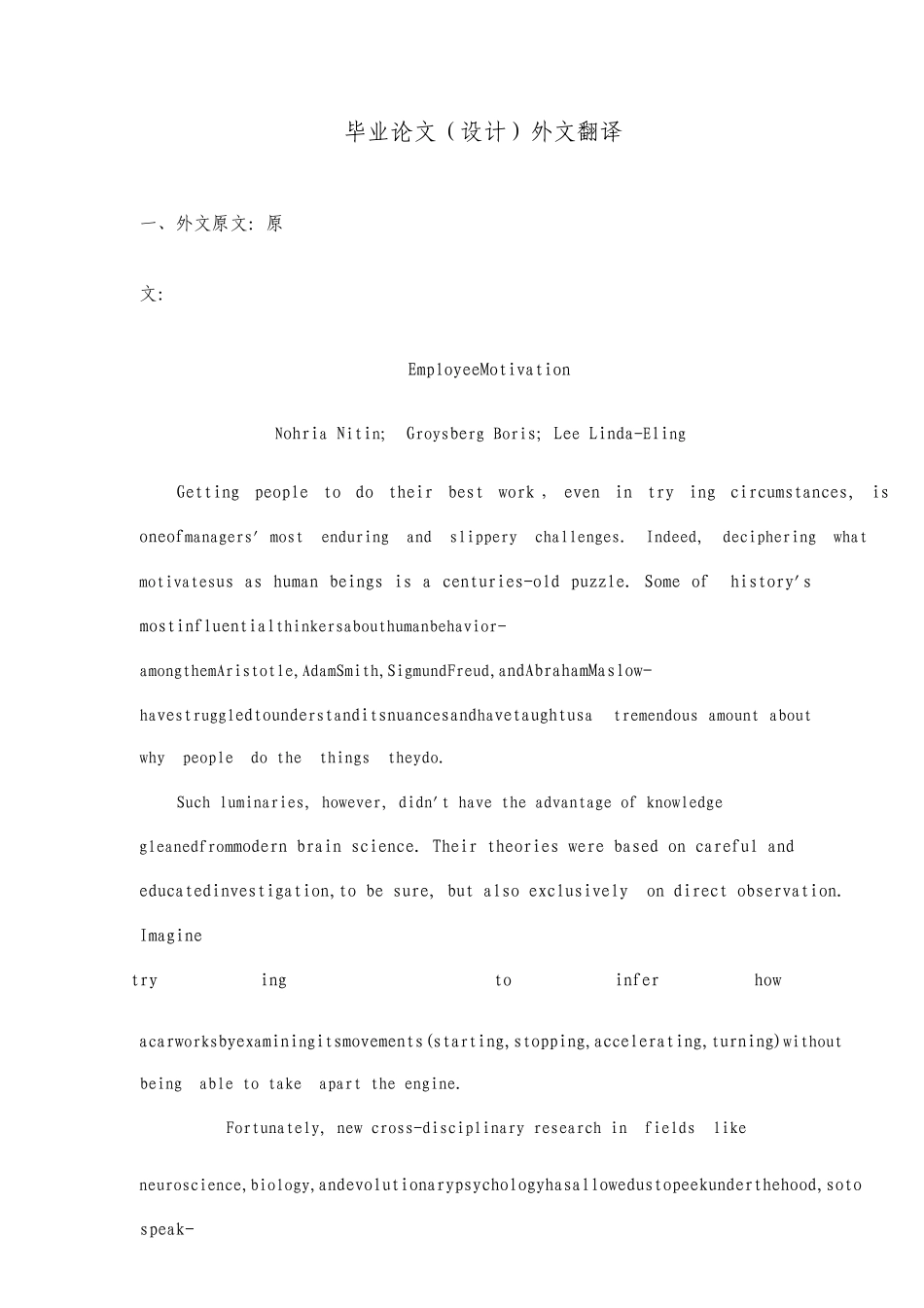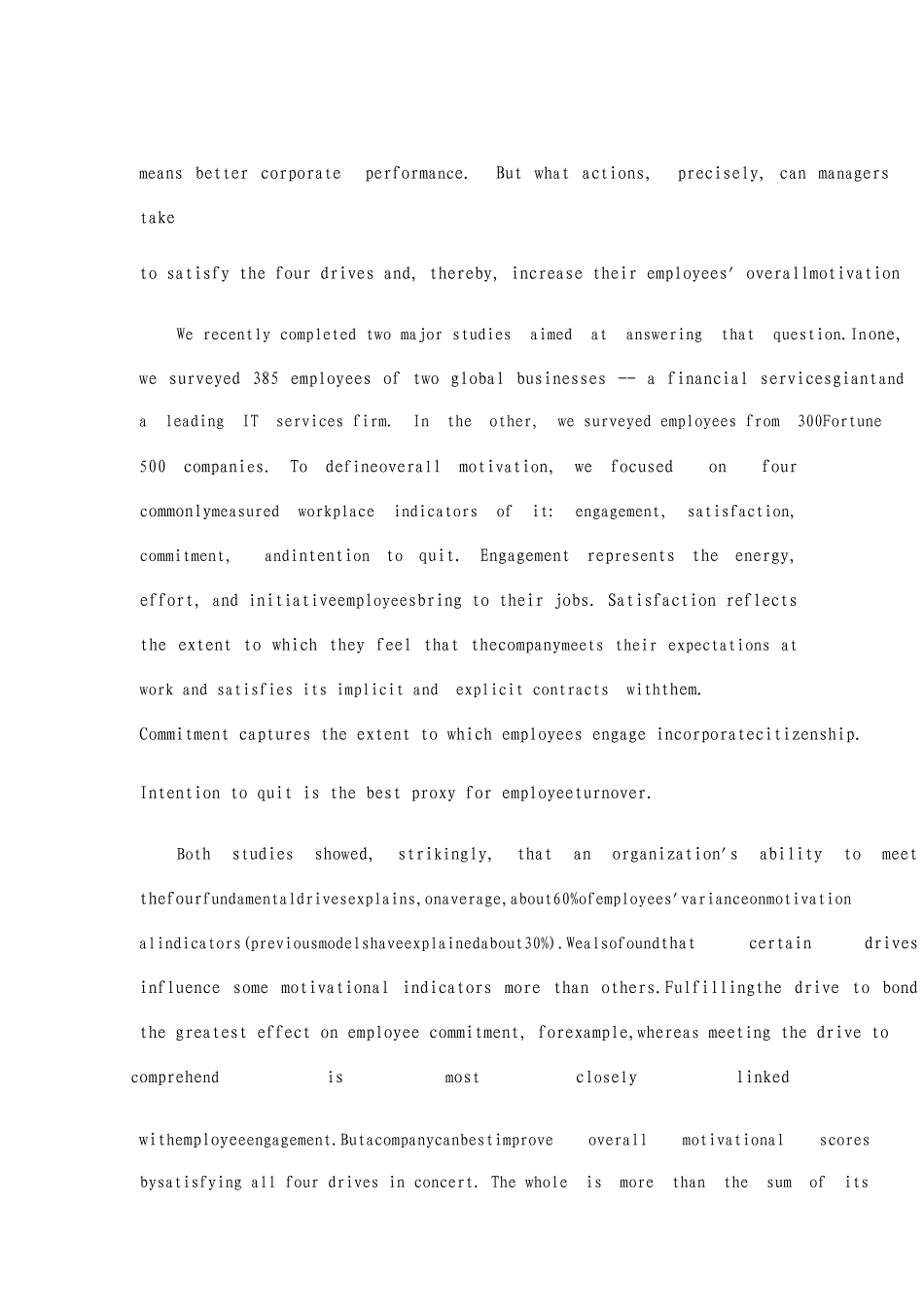毕业论文(设计)外文翻译 一、外文原文:原文: EmployeeMotivation Nohria Nitin; Groysberg Boris; Lee Linda-Eling Getting people to do their best work , even in try ing circumstances, is oneofmanagers' most enduring and slippery challenges. Indeed, deciphering what motivatesus as human beings is a centuries-old puzzle. Some of history's mostinfluentialthinkersabouthumanbehavior-amongthemAristotle,AdamSmith,SigmundFreud,andAbrahamMaslow-havestruggledtounderstanditsnuancesandhavetaughtusa tremendous amount about why people do the things theydo. Such luminaries, however, didn't have the advantage of knowledge gleanedfrommodern brain science. Their theories were based on careful and educatedinvestigation,to be sure, but also exclusively on direct observation. Imagine try ing to infer how acarworksbyexaminingitsmovements(starting,stopping,accelerating,turning)without being able to take apart the engine. Fortunately, new cross-disciplinary research in fields like neuroscience,biology,andevolutionarypsychologyhasallowedustopeekunderthehood,soto speak-tolearnmoreaboutthehumanbrain.Oursynthesisoftheresearchsuggeststhatpeopleare guided by four basic emotional needs, or drives, that are the product of ourcommonevolutionaryheritage.AssetoutbyPaulR.LawrenceandNitinNohriaintheir book Driven: How Human Nature Shapes Our Choices, they are the drivestoacquire(obtainscarcegoods,includingintangiblessuch as social status); bond(form connections with individuals and groups); comprehend (satisfy our curiosityand master the world around us); and defend (protect against external threatsandpromote justice). These drives underlie everything wedo. Managers attempting to boost motivation should take note. It's hard to arguewiththe accepted wisdom -- backed by empirical evidence -- that a motivatedworkforce means...


